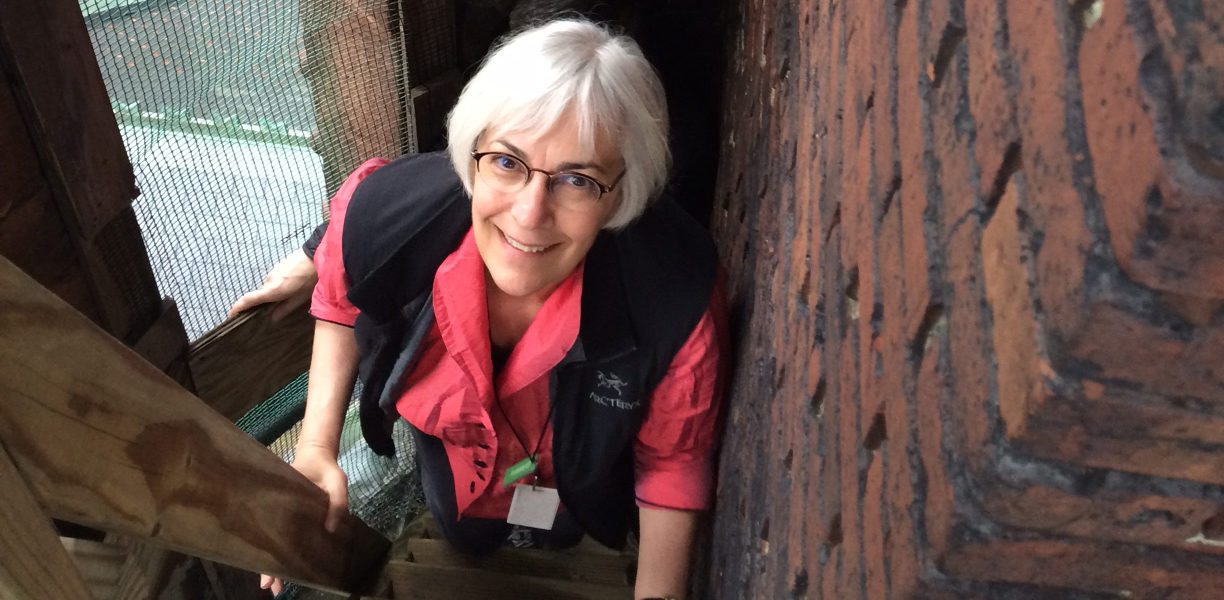Mark Pasnik AIA

Principal, OverUnder and Professor, Wentworth Institute of Technology
You have recently been named an Out 100 honoree—with the likes of Rachel Maddow, Tim Cook, and other members of the LGBTQ+ community—to bring attention to your civic work as an architect. Who do you think is the most underappreciated architect and why?
I have to pick a "heroic" for this one. Tad Stahl, who was always described as a "citizen-architect" is never celebrated enough—not just for his buildings, but the way he shaped Boston and the preservation movement more broadly. He was a pioneer, especially in his early studies for remaking Quincy Market or the reconstitution of the Vendome after its fire. Tad quietly made a wider impact on Boston than most people realize.
What is your favorite Boston-area building or structure?
I can't decide! I have two favorites, the Hancock Tower and Boston City Hall. Although completed within a few years of one another they are very different, and I love what their differences say. Both began steeped in controversy but our understanding of them has changed over the years. One is commercial, the other civic. One about poetry, the other about authenticity. One reflects the world around it, the other expresses its internal functions. Both have become iconic symbols of Boston, but their journey is so different. They each present ideals and ideas from another generation, and I was lucky enough to get to know their architects well. Sadly we lost Harry Cobb and Michael McKinnell this year, but their buildings remain like elegies.

Has your career taken you anywhere you didn’t expect?
Absolutely. I wasn't quite certain where my career would go, since I had parallel interests in history, theory, and design. But a first research job during graduate school with Rodolfo Machado and Rodolphe el Khoury on an exhibition at the Carnegie Museum got me started with interests in publications and exhibits, alongside buildings. That interest has only expanded since. Incidentally, the exhibit was titled "Monolithic Architecture." So I guess with "Heroic," I did not stray very far. I seem to be drawn to heavy buildings.
Which one of your current projects excites you the most?
Over the last few years I have been working with a team from Utile, Building Conservation Associates, and OverUnder to develop a conservation management plan for Boston City Hall. It has been rewarding to consider the future of one of my favorite buildings, and to advise on how to manage change going forward. This project has ranged in work from archival research and oral history interviews to considerations about very technical concerns related to function, sustainability, and material science. We have been supported by the Getty Foundation's Keeping It Modern program and have gotten to work with an amazing array of people from the City of Boston. The project is occurring at the intersection of material and cultural values, so I find it particularly exciting. Plus we are getting to design a publication as the record of our work.

What do you see as the largest barrier to equity in your profession?
Equity is a particularly difficult challenge in the discipline of architecture. There are deep-set systemic biases based on gender and race that have plagued our profession for generations. We all need to work hard to overcome these. But one key question is how do we provide greater access to our profession for young women and people of color. As an educator at the college level, I'm very aware that we have to do better to engage a new generation of architects and designers who more directly reflect the diversity of our country. I have been working over the last year with students in the Boston Public Schools system in hopes that we can open eyes to the possibility of a design career.
What is the most effective step you’ve taken in your work toward a more sustainable built environment?
If we hope to stave off the tipping point of environmental catastrophe, I believe our profession and educational system need to make a more concerted focus on how to reuse existing buildings. To do so we need to invest our brightest minds in the creative act of transformation.
What is the greatest potential for architecture to shape a neighborhood community?
Today we are witnessing a new kind of design activism in the face of the pandemic. Back in March my colleagues at OverUnder started a pro-bono initiative we called "Signs of the Times," which looked at how communications and ideas about the public realm could evolve in a public health emergency. Our team developed and shared studies of the region’s street networks to identify places most in need of expanded sidewalks, recreational street closures, and other changes that could support the safe reopening process. We also developed a public signage system that has become a City of Boston standard, serving restaurants and retail by letting people know how to access and support the businesses. Designers need to be advocates too. We need to be on hand with imagination and ambition to respond to, shape, and fight for equity and access in the evolving environment of our communities.

What are you reading right now?
I have been a member of a book club since the late 1990s, and we tend toward fiction, which counterbalances nicely the texts I read academically. As of late we have been reading several authors who are people of color to expand our own perspectives. This month's is Colson Whitehead's The Nickel Boys. One of our recent favorites earlier in the pandemic was Adam Johnson's The Orphan Master's Son. Both are worth a look if you want to be transplanted to another time and place.
For more on Mark and his work, visit his website: overunder.co
For the article in Out Magazine, referenced in the first question, visit: This is the 26th Annual Out100.

